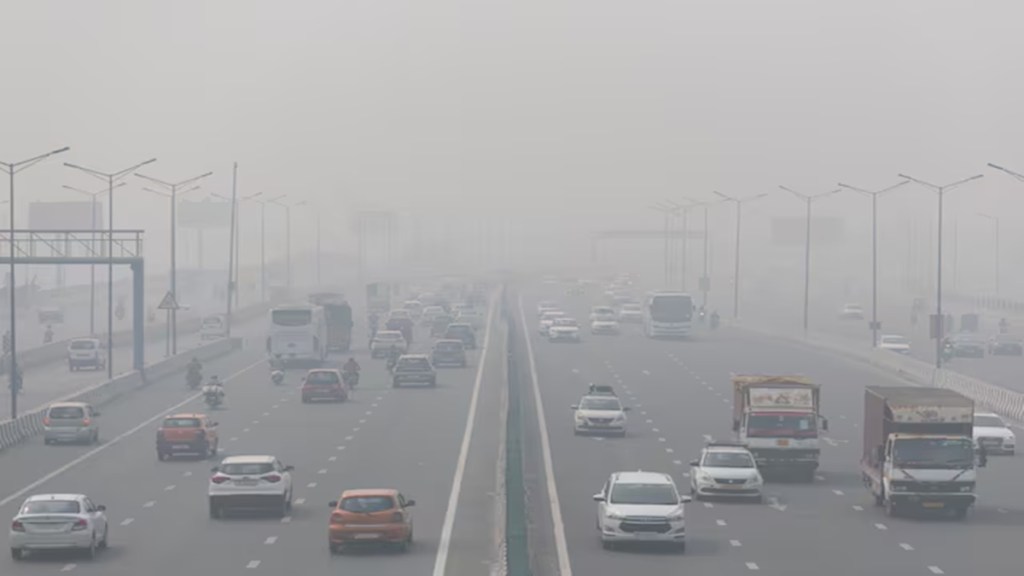By Nirvikar Singh
A constant headline at the end of each year in India is the problem of air pollution. Increased monitoring of pollution levels as well as worsening levels themselves have made these headlines global. The problem is most acute in the Indo-Gangetic plains of northern India, which have topographical and climatic features that trap pollutants near the ground. Recent headlines have tended to focus on the capital region of Delhi, or on other cities, as sites of acute problems, and on the increased burning of crop residues in the agriculturally intensive states of Haryana and Punjab as a proximate cause. However, the problem affects all of northern India, and the causes are many.
A National Clean Air Programme was launched in 2019, and it has increased monitoring of air pollution, but has had little impact in terms of reducing the problem. Government responses have included shifting schools to online modes or just asking students to stay home, banning vehicles in certain cities at certain times, and shutting down various economic activities. Individuals also respond to pollution by curtailing their activities, or by relocating temporarily. The health costs of air pollution at the levels being experienced in India are enormous. The responses to mitigating these costs seem to be extraordinarily inefficient in terms of costs, and the benefits may be limited by their unevenness and limited nature. Why is India doing so badly at controlling air pollution?
Clean air is a public good, in the economist’s definition of that term — theoretically available simultaneously to everyone without exclusion. It is not something that markets can provide efficiently. Therefore, air pollution is a failure of governance. What are the sources of this governance failure in India? At an abstract level, these sources are structural, and more or less common across different public goods in the Indian context, though keeping the air clean has its own special features and complexities.
Air pollution comes from combustion. In the case of factories and power plants, technologies exist for controlling the emissions that contribute to air pollution. A pervasive problem in India is lack of clear regulations for such controls, and lack of enforcement. Polluters have to be given incentives to reduce their pollution. Shifts in technology can also help solve the problem; in particular, reducing the use of coal for electric power generation or industrial activity by shifting to renewable energy is technologically and economically feasible. Internal combustion engines for vehicles are another major source of air pollution. The emissions of these engines can also be reduced with add-on features, or they can be replaced by battery-powered engines. In the case of crop residue burning in agriculture, there is no technology for emissions reduction, but there are several alternatives to burning the residue.
All of these cases may involve potential one-time switching costs, as well as higher ongoing costs. In many cases, there needs to be systemic switching to make the change feasible, as in the case of electric vehicles which need a new infrastructure for charging rather than petrol filling stations. Systemic adjustments are also needed in the case of switching to renewable energy for electric power — the entire power grid, including new electricity storage mechanisms, needs to be redesigned and reconstructed. In the case of crop residue burning, cropping choices need to be modified at a systemic level, and this also requires changes in national food procurement policies.
A common source of failure to change in all these cases is centralisation without coordination, and without customisation to specific needs. Design and implementation of policies both suffer. Resources and authority are not allocated optimally across different levels of government— national, state, and local. Resources for implementation, including enforcement, are typically inadequate, or not well-monitored. This situation persists because democratic accountability mechanisms are weak as well. The relative failure of these political mechanisms is also a political issue — impulses for political control reduce politicians’ incentives to improve the system. For example, allowing the judicial system to remain resource-poor increases politicians’ power and control. Democratic accountability is not the only option — China manages without it, but it has institutional mechanisms for horizontal and vertical coordination and implementation. It has done much more than India to reduce air pollution. Of course, this is not an endorsement of authoritarianism, but a pointer toward effective incentives and accountability.
Another, less obvious source of obstruction is that India is a highly unequal society. In “socialist” India, this inequality did not show up fully in income and wealth statistics. It manifested itself in activities that were not measured in economic data — privilege and perks that were far greater for the elites than those below them in the pecking order. As India has liberalised, there has been some democratisation, but more than outweighed by increasingly unequal access to earning power. Clean air, like other public goods, can be privatised to some extent — elites can live, travel, and work in air-conditioned cocoons. Only when they start to be affected does policy attention reach critical levels. But policies that are localised and reactive will solve none of India’s air pollution problems.
The “canary in the coal mine” was an early warning system for those miners of the past, its health an indicator of potentially dangerous air in the mining tunnels. The metaphor is one that can be applied broadly. In this case, air pollution in India is an indicator of the pervasive institutional weaknesses that hold back material progress.
The author is professor of economics, University of California, Santa Cruz.
Disclaimer: Views expressed are personal and do not reflect the official position or policy of FinancialExpress.com. Reproducing this content without permission is prohibited.

